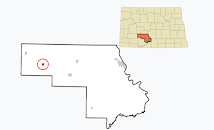 |
| Milton Magnus and his son, Mack, share their family business story. (M&B Hangers photo) |
Deng explains, "He helped persuade the Commerce Department in 2008 to impose duties of up to 187% on imports of Chinese hangers, after arguing that China was selling its products at unfairly cheap prices. He has alleged U.S. tariff evasion in cases involving several American importers. . . "
His efforts have also led to investigations and suits against other Asian countries, which were often entangled with Chinese businesses. "Magnus and his lawyers filed trade cases in 2011 against Taiwan and Vietnam. The Commerce Department imposed tariffs," Deng reports. "Then, hangers from Thailand, Malaysia, India and Sri Lanka started popping up."
Despite his participation in legislative wins, such as the Enforce and Protect Act, "which ultimately passed in 2016, [and] allowed Magnus to file claims of tariff evasion with U.S. Customs and Border Protection against a host of American hanger importers," Deng writes, "the overall effect was like a Band-Aid on a bigger problem." Magnus told Deng, "It’s like a roller coaster. We file a trade case, demand for us goes way up, then there’s a new way of circumvention and demand goes down."
Magnus' fight is not over. He "feels that Washington has finally come around to his view that China is the U.S.’s largest economic threat, although he thinks more protection for businesses like his is needed," Deng reports. "Magnus says he spends about a third of his time on his own legal battles. He sees tariffs as worth the trouble if they help save his Alabama factory, which now employs 50 people. . . . M&B Hangers is one of the last remaining U.S.-based manufacturers of its type."








